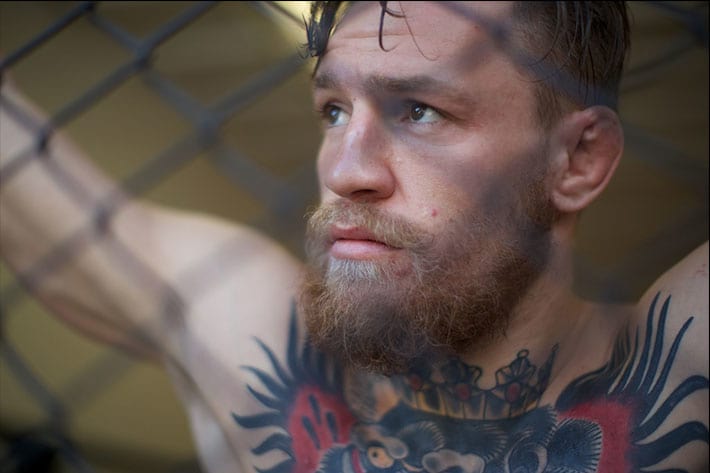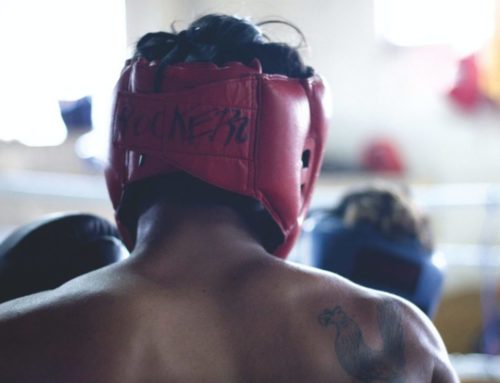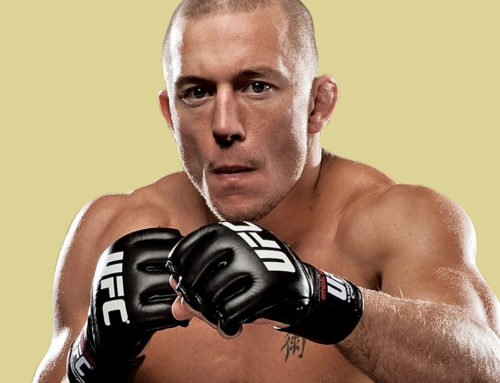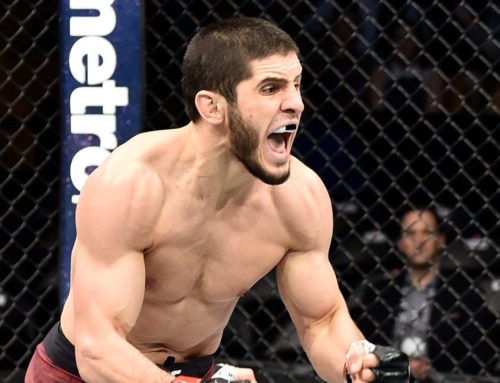Never had so much been made of something so pointless. It was a push, claimed Paulie Malignaggi. Not a knockdown, a push.
Only then we discovered it wasn’t a push. Not necessarily a clean knockdown, either. But definitely not a push.
Great.
At first, images taken after this so-called push, images of him on his backside looking up at Conor McGregor, the architect of the moment, caused Malignaggi to flee training camp. He said it was all a little TMI for him and that some things should be left behind closed doors and were not for public consumption. What happens in the gym, stays in the gym. Omertà: the code of silence. That sort of thing. He was confused, livid, wronged.
Then, days later, as speculation reached fever pitch and Malignaggi, retired at 36, had never felt more relevant, McGregor and his promoter, UFC President Dana White, released footage of the pushdown/knockdown in question and blew the whole case wide open. Difficult to claim a clean, decisive knockdown, it nevertheless appeared more than just a push. That much was clear.
The former world champion boxer, meanwhile, stuck with his story. He said the referee Joe Cortez (yes, if you weren’t aware, McGregor has employed an actual referee for sparring – and even made him wear his work uniform) refused to administer a count once he hit the deck, which surely must mean the flashpoint was caused not by a punch but something else. “No knockdown” were, apparently, the words of Cortez as Malignaggi hauled himself back to his feet.
Like it matters. Whether a knockdown or a push, the sight of Malignaggi on the canvas will serve only to stoke the fire of hardcore McGregor fans oblivious to the notion of their man getting thoroughly thrashed in the boxing ring on August 26. For the rest, those who doubt McGregor’s ability to win a minute of any round, much less the fight itself, the sight of Malignaggi on his back does little to change their opinion about what happens when Floyd Mayweather, a boxer, and Conor McGregor, a mixed martial artist, box in a Las Vegas boxing ring in less than two weeks.
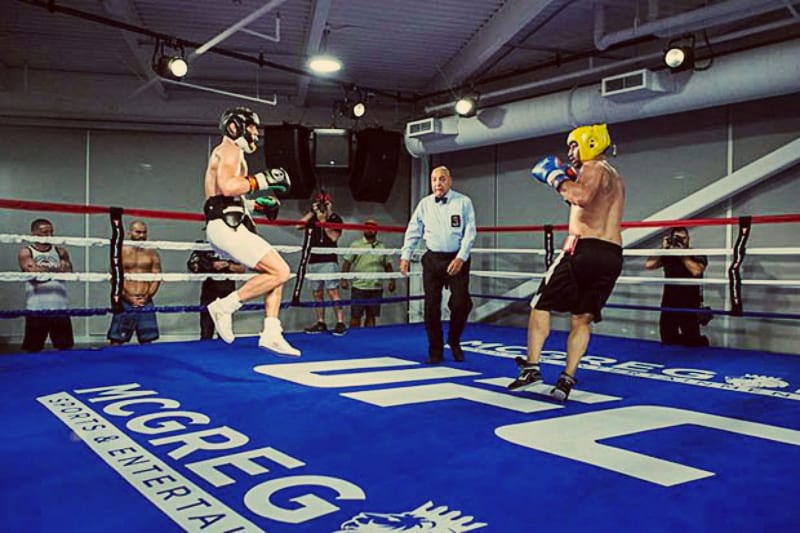
Sparring sessions, we should remember, are easily (and frequently) manipulated when videoed, cut up and later pieced back together. I have seen it done in the past. I have stood ringside and witnessed a one-sided sparring session that, in reality, featured a fighter rocked, badly hurt and then stopped prematurely, get somehow repackaged, on video, as a competitive spar from which the hurt fighter came away with credit and the moral victory. There were no shots of him being stunned and shaken by a right hand. No shots of his legs wobbling. No shots of him staggering back to the corner at the end of the round to suck up water from a plastic bottle. No shots of his coach signalling to the other sparring partner, the one on top, that the spar was over.
Instead, the video, used to promote an upcoming fight, comprised highlights of the boxer, the one eventually pulled from the spar, landing a series of jabs and right hands, snapping back the head of the sparring partner and momentarily shaking him up, and absolutely no sign of struggle. It was simply action plucked from earlier in the spar; some of it had even been extracted from prior spars. It all amounted to a slick cut and paste job. A white lie.
The point, though, is this: a lot happens in sparring and, if there’s enough material going around, you can tell any tale and construct any narrative you like. Malignaggi, for example, could have been beaten up by McGregor and taken McGregor to school. It could have happened in the same spar. He could have been rocked by the Irishman’s left hand and he could also have hurt the Irishman to the body. That could have happened in the same round.
It’s sparring. Just sparring. S**t happens.
Interestingly, according to the laws of sparring, none of this should have become public knowledge anyway. We shouldn’t have been privy to the push or the punch. It should have all been kept quiet.
Sparring laws differ from gym to gym, but a few elements stick.
1: Boxers will, for the most part, wear head guards and larger gloves.
2: They stand in the corner between rounds.
3: The gym will generally be silent during the course of sparring, save for perhaps background music set on a low volume and the commands of the coach or coaches situated around the ring.
4: There will be a buzzer in place of a bell.
5: There will be a slow build, a ‘feeling-out process’, followed by a frantic final few rounds.
6: There might be multiple sparring partners and a one in, one out approach to ensure freshness.
7: Finally, and most importantly, there is an unwritten code of silence – sometimes written, actually, in the form of a non-disclosure agreement – that means what happens in the ring, during sparring, should stay between the two participants and those dotted around the ring. (Oneupmanship in sparring is not something you boast about, at least not publicly, and is viewed by the boxing world the way Jimmy Conway viewed Henry Hill in court at the end of Goodfellas. You f**king rat.)
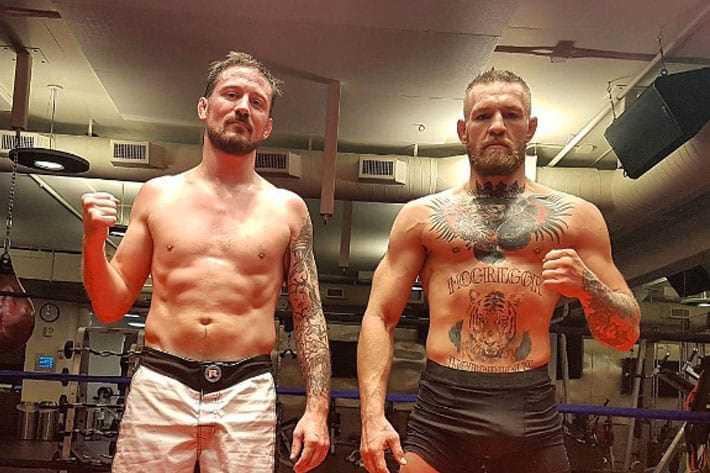
The Mayweather Boxing Club, situated along Schiff Drive in Las Vegas, goes to great lengths to prevent loose lips, even when Floyd Mayweather, the owner, the boss, the star pupil, is absent. I experienced a taste of this in 2013, when a boxer with whom I travelled to Vegas arrived at the Mayweather gym looking for sparring. The spar began, the boxer found his groove, and I, at the boxer’s request, took my phone out to begin recording the action. But no sooner had I done this than one of the coaches made a beeline for me, signalled for me to switch my phone off and then later explained it was a gym policy – “Sorry,” he said, “it’s the way we do things round here. No filming.”
Well, not strictly true. On closer inspection there were at least two other people, situated across the ring in the opposite corner, happily filming the spar without any fear of slapped wrists or a confiscated smartphone. One rule for them, another for us, the foreigners, it was only when their TMT boy started taking what can only be described as a good old Sin City ass-whupping that the phones sheepishly returned to pockets and the gym truly did become a video-free-zone. The sweetest kind of victory, you might say.
Though initially welcoming, there was an intimidating feel to the Mayweather Boxing Club that day. You could interpret this as pack mentality or old-school professionalism. Either way, I left with the feeling that even if Floyd Mayweather had ever been beaten up or knocked down inside the four walls of that gym, there’s no way any of us would ever know about it. Gym on lockdown, it’s as tight as his defence, a well-oiled operation, and surrounding family members, coaches and boxers alike are predisposed to keeping quiet – if they know what’s good for them.
If this speaks to Mayweather’s professional experience and controlling nature, the drip-drip-drip of McGregor’s camp speaks more to his cavalier approach, his self-promotion, his need to tell stories and create controversy, and the circus-like nature of his next assignment. He was, because of all this, always going to cajole and exploit, and he was always going to cast someone like Paulie Malignaggi, a light-hitting ex-fighter who had previously ridiculed McGregor’s boxing aspirations, as the washed-up fall guy. What’s more, the fall-guy’s demise, the moment his ass hit canvas, was always likely to be captured by McGregor-endorsed photographers primed to pounce. To them, it was the payoff. They saw in their future copious retweets and likes and discussion and cared little for Malignaggi’s dignity, nor the etiquette of a sport in which they are temporarily dabbling.
None of this should have come as any surprise. Not to us, those accustomed to McGregor’s wild ways, and certainly not to Paulie Malignaggi, a well-travelled veteran who essentially agreed to participate in a reality television show and then two weeks later complained about getting filmed and demanded all nude shots be deleted.

